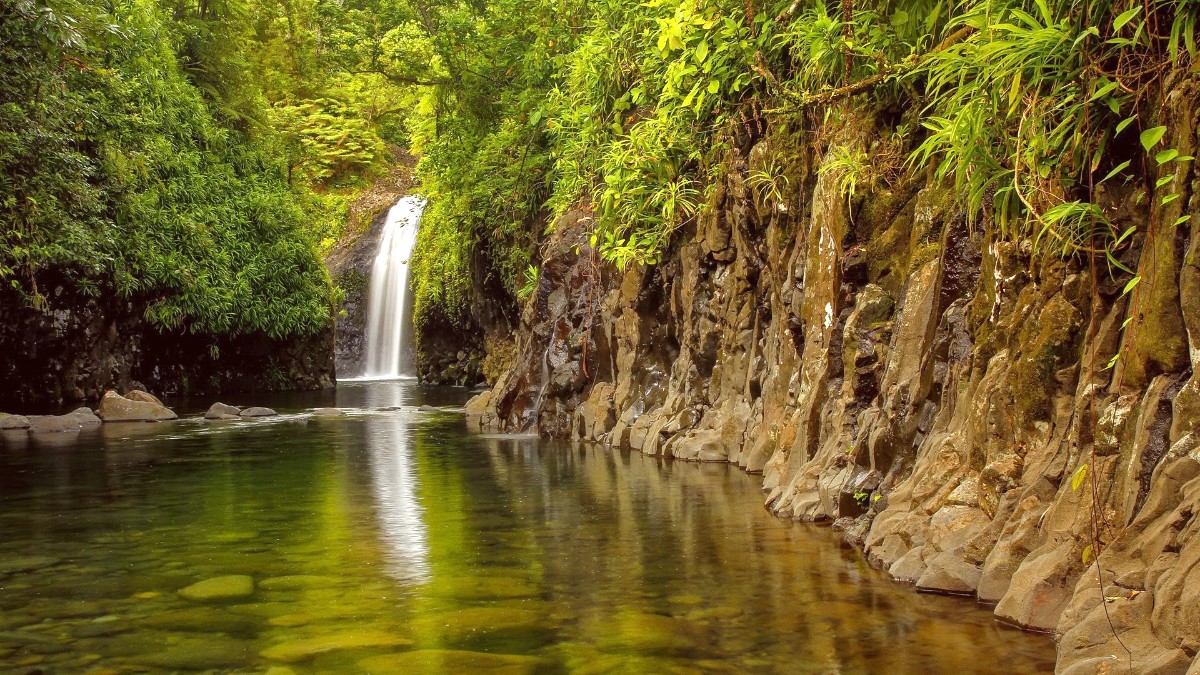
Fiji
Taveuni is a destination known for its pristine natural environment. It presents a blend of lush rainforests, dramatic waterfalls, and world-renowned dive sites. This makes it a destination for eco-tourists, divers, hikers, and anyone seeking a tranquil, nature-focused escape. It caters to those who prioritize natural beauty and outdoor activities over bustling nightlife or extensive shopping.
Taveuni's unique location means its weather patterns differ from the larger islands. Expect a climate that shifts between dry and wet seasons, each with distinct advantages for your visit. The island's small size means many different areas are reachable without extensive travel time. However, travel between north and south on the island can still take a couple of hours by car.
Taveuni’s volcanic past not only shaped its land but also created the dramatic underwater topography that attracts divers worldwide. The rich, dark soil visible across the island stems directly from ancient lava flows, providing a foundation for its incredible biodiversity. From the highest peaks to the deepest reefs, Taveuni’s geography directly supports its identity as a natural wonderland.
Taveuni is a history intertwined with both ancient Fijian tribal dynamics and later European influence. In the early 19th century, the island served as a frequent battleground. Taveuni chiefs engaged in conflicts with leaders from other parts of Fiji, including the powerful chief Cakobau from Bau. These conflicts often shaped control over valuable resources and territories. Oral traditions and archaeological findings, like ancient fortifications, offer glimpses into this era of intense inter-island rivalry and complex social structures.
European contact began in the mid-19th century with the arrival of whalers and traders. They sought valuable commodities like sandalwood and bêche-de-mer (sea cucumber), which were in high demand in Asian markets. This early trade introduced new goods and ideas, but also brought diseases that affected the local population. Missionaries arrived around the same time, promoting Christianity. Their efforts led to the gradual conversion of the island's inhabitants, changing traditional spiritual practices and societal norms. Churches, some dating back to this period, remain prominent landmarks on the island.
By the late 19th century, European planters established large coconut plantations, transforming the island’s economy.
Ancient fortifications, burial grounds, and village sites give insights into pre-colonial Fijian society.
The island's position on the 180th meridian line carries historical weight as the symbolic International Date Line.
Taveuni served as a frequent battleground in the early 19th century between tribal chiefs.
Missionaries arrived in the mid-19th century, promoting Christianity and altering traditional practices.
When visiting villages or historical sites, observing local customs is a kind gesture. Modest dress shows respect for the island's history and the traditions that continue today. Consider learning a few Fijian phrases to connect with residents; they appreciate the effort.
The intertwining of ancient traditions, colonial influence, and the persistent "Bula" spirit forms the island's unique cultural fabric. This history shaped Taveuni into the peaceful, resilient, and welcoming place it is today.
Visitors often find that the past still quietly informs the present, from the rhythm of village life to the conservation efforts preserving the island's natural and cultural legacy.
Image Suggestion: A scenic aerial view of Taveuni's lush coastline meeting blue waters. Image URL: https://upload.wikimedia.org/wikipedia/commons/thumb/1/1d/Taveuni_Island.jpg/1280px-Taveuni_Island.jpg
Taveuni’s appeal includes its major attractions. Bouma National Heritage Park stands out with its cascading waterfalls, including the popular Tavoro Falls. These falls offer refreshing swimming holes and opportunities for jungle hikes. Below the surface, the Somosomo Strait, situated between Taveuni and Vanua Levu, hosts the Rainbow Reef and the Great White Wall.
Taveuni’s economy relies heavily on tourism and agriculture. Copra production, from the widespread coconut plantations, remains an important economic activity. The blend of these two sectors highlights the island's reliance on its natural resources. They maintain strong traditional customs and practice a relaxed, friendly way of life. Expect life to move at a slower, more deliberate pace, inviting you to relax and adapt to "Fiji time."
Bouma National Heritage Park, Tavoro Falls, Rainbow Reef, Great White Wall offer natural wonders.
World-renowned dive sites with abundant marine life attract divers seeking reefs.
Tourism and copra production form the backbone of Taveuni's economy.
The island’s commitment to preserving its natural beauty is evident in community-led conservation efforts. These initiatives safeguard the rainforests and marine ecosystems, ensuring Taveuni remains a haven for biodiversity.
For travelers, this means access to well-maintained trails, healthy reefs, and opportunities to support local communities directly through park fees or guided tours.